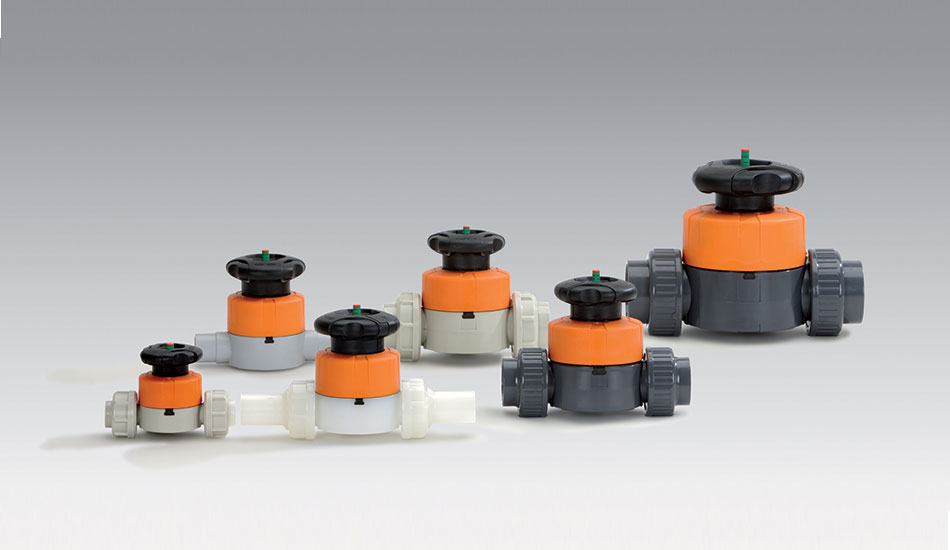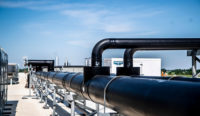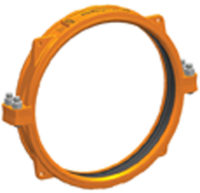GF Piping Systems has introduced the Type 514-519 High Flow Diaphragm Valve Series. The valves are designed to provide a true break-through for weir style valves. The valve features an optimized, turbulence-free flow geometry that offers significantly increased flow rate performance and lower energy consumption, according to the company. These features expand the valve’s suitability for applications where diaphragm valves were previously not considered due to flow restriction.
The valve’s new flow geometry design provides Cv values that on average are more than double those of a diaphragm valve with a traditional design. The modified geometry provides linear flow and control characteristics that improve processing stability, resulting in reduced operating costs and more cost-effective media transport. A self-draining feature minimizes dead space and achieves improved hygiene and better resistance to crystallizing fluids.
The design also eliminates the need for metal bolts required to hold traditional valves together. Instead, the bonnet is threaded directly onto the body, eliminating the need to re-torque the bolts due to thermal expansion. With its metal-free threaded bonnet connection, corrosive build-up is minimized in applications with highly aggressive media.
The 5-Series Diaphragm Valve is available in PVC, CPVC, PP, PVDF, and ABS body materials in sizes .5 to 2 in (with larger sizes available in the 317 Series). Diaphragms are available in EPDM, PTFE, FPM, and NBR. This material range covers practically the entire spectrum of chemicals with which diaphragm valves can come into contact, optimizing process compatibility. Standard PVC, CPVC, PP, PVDF, and ABS versions can handle pressures up to 150 PSI. End connections include socket, spigot, and flanged. Basic versions of the diaphragm valves are operated manually with a lockable handwheel for protection against unwanted adjustment. An optional integrated electrical feedback unit can be quickly retrofitted, enabling piping system regulation and reliable process monitoring.
www.gfps.com
Diaphragm Valve: GF Piping System




